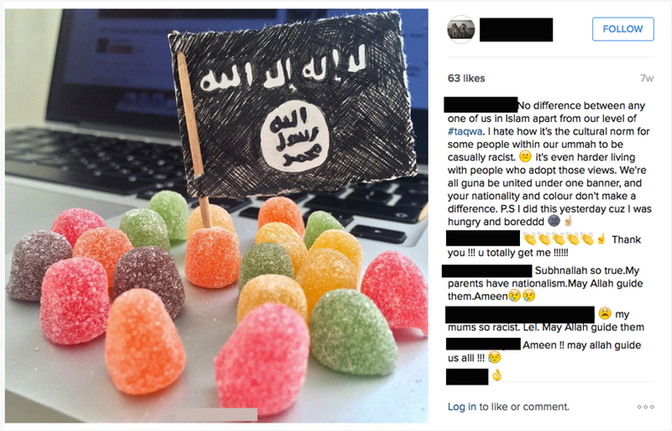By Aabid Shafi
ISIS’ social media capabilities are well known. The effectiveness with which the group makes use of social media to recruit new fighters and spread its propaganda has set off an alarm among security agencies around the globe.
It has even led to former US Secretary of State Hillary Clinton terming ISIS the “most effective recruiter in the world”, besides urging tech companies based in the Silicon Valley to halt the group’s ability to woo recruits through online videos and social media.
Clinton isn’t the only one concerned about the misuse of social media by terror organisations. In fact, her fears have been echoed by various studies including the one carried out by researchers from George Washington University which shows that Twitter is ISIS’ most significant online recruitment tool. However, the groups use of a photo-sharing platform like Instagram can’t be underestimated either.
In an interview with The Verge, Sarah Gilkes, a research associate at GWU’s Program on Extremism who worked on the study reveals how ISIS’ supporters from across the globe use Instagram to spread extremism. The Verge worked with Gilkes to examine the publicly available Instagram posts of ISIS supporters. They found that the approach of ISIS supporters on Instagram was more informal as opposed to other social media platforms like Twitter and that the platform allowed them normalise radical ideas.
A close examination of the hashtags revealed a strong denouncement for western intervention in Syria. While some posts allude to extremist views, not all of them use the specific hashtags and imagery that indicate ISIS support.
Images and their captions shared by supporters tap into themes of nationality versus unity under a religion. One account has set the ISIS flag as its main image, others propagate ISIS’ mantras through easily consumable images that instantly strike a chord with potential recruits. The hashtags used with the photos are Jihad, Unity, Khilafah (caliphate), Taqwa (piety) as well as the names of countries like Iraq, Afghanistan, Pakistan – all hinting at the desire to expand into territories mired in conflict.
Pictures like the above are posted to provide a glimpse of everyday life, something that isn’t often seen in the mainstream media. These images, as Gilkes points out, act as a counter-narrative to the idea of ISIS as a state of death and destruction. It’s also one of the platform’s major pulls since it enables the group to share visual proof of this counter-narrative.
Most pictures, as the report says, are gentle and show support through slang, emojis and hashtags. This kind of usage poses a major challenge to social media platforms to filter such propaganda.
Aabid Shafi is the Digital Producer – Social Media at The Quint. This post was first published on The Quint website on 11 December, 2015. Republished here with the editor’s permission.
